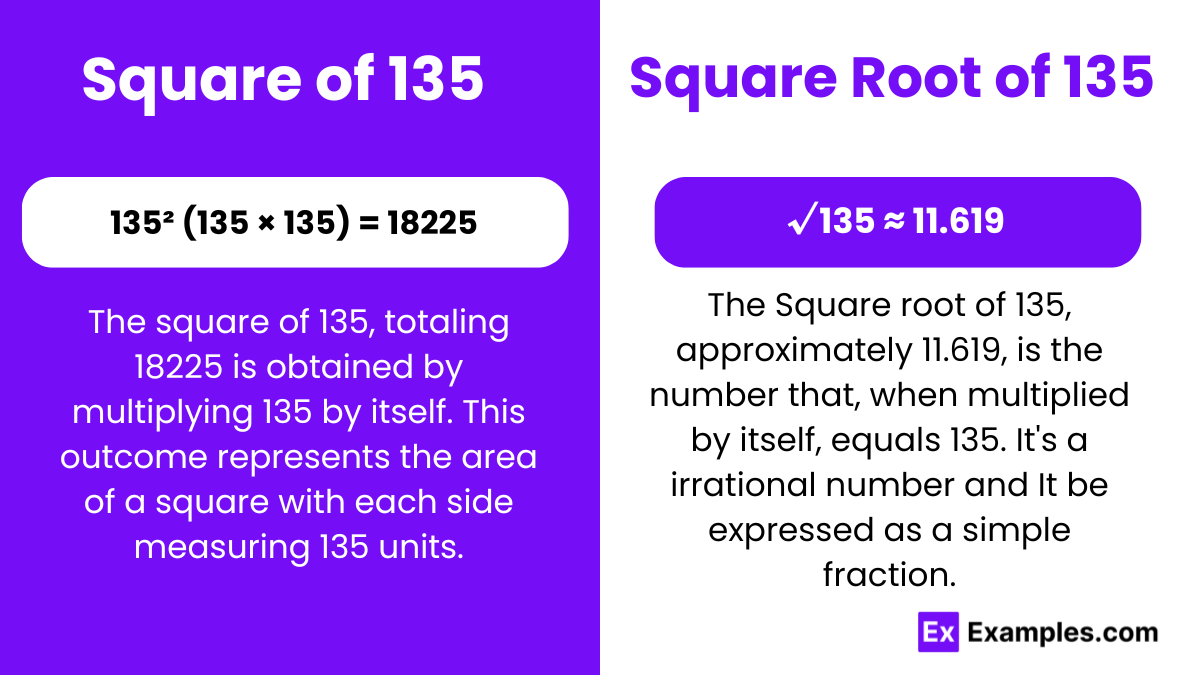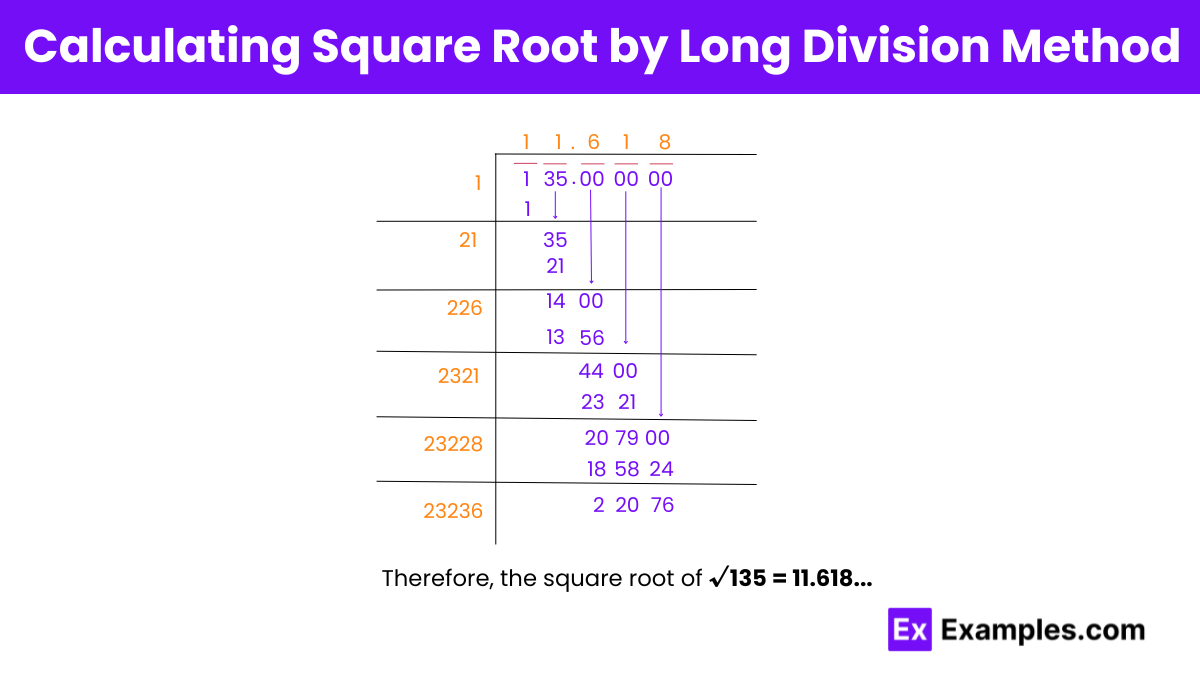What is the square root of 135?
11.62
12.75
11.50
12.00


Within the domain of algebraic mathematics, squares and square roots hold significant importance. Squaring a number, such as 135, entails multiplying it by itself, yielding 18225. This foundational operation is vital for exploring rational and irrational numbers. A grasp of these fundamentals enriches understanding of mathematical relationships and patterns. Squares illuminate inherent number properties, while square roots unravel intricate numerical mysteries. These concepts serve as beacons, guiding mathematical explorations into fractional territories. Proficiency in squares and square roots equips mathematicians to navigate varied mathematical landscapes, unveiling the elegance and complexity inherent within algebraic frameworks.
The square number of 135 equals 18,225, obtained by multiplying 135 by itself, a fundamental operation in algebraic mathematics, uncovering inherent number properties.
Or
√135 ≈ 11.619 upto 3 decimals
The square root of 135 is approximately 11.619. This fundamental mathematical operation reveals the value that, when multiplied by itself, equals 135.
Exponential Form: 135^½ or 135^0.5
Radical Form: √135
Rational numbers are expressible as the quotient of two integers. Irrational numbers, however, cannot be represented as fractions of integers. Examples of irrational numbers include the square roots of non-perfect squares.

Step 1: Write 135 as 1 35. 00 00 00 and take the numbers in pairs from the right. 1 is left alone. Let’s divide 1 first.
Step 2: Find a number × number such that it results ≤ 1. We get (1 × 1 = 1).
Step 3: Get the remainder as 0 and bring down the next pair 35 for division.
Step 4: Double the quotient obtained. It is 2 and we have 20 as our new divisor.
Step 5: Find a (number + 20) × number) such that it results ≤ 35. We get (1 + 20) × 1 = 21.
Step 6: Subtract this from 35. Get the remainder as 14. Bring down the next pair of zeros. 1400 is taken for division.
Step 7: Double the quotient obtained. It is 22 and we have 220 as our new divisor.
Step 8: Find a (number + 220) × number such that it results ≤ 1400. We get (6 + 220) × 6 = 136.
Step 9: Subtract this from 1400 and get the remainder as 4400. Bring down the next pair of zeros. 4400 is our new divisor.
Step 10: Quotient we have got so far is 11.6 and on doubling we get 232. We take 2320 as our new divisor.
Step 11: Find a (number + 2320)× number) such that it results ≤ 4400. We get (1 + 2320) × 1 = 2321).
Step 12: We repeat the process until we approximate the square root of 135 to 3 decimal places.
A perfect square can be expressed as the square of an integer. Therefore, the square root of 135 is an irrational number.
Prime factorization breaks 135 into its prime factors: (3³ × 5). It decomposes 135 into its smallest prime numbers, aiding in mathematical analysis and problem-solving.
No, 135 cannot be expressed as the square of an integer because it is not a perfect square.
Text prompt
Add Tone
10 Examples of Public speaking
20 Examples of Gas lighting
What is the square root of 135?
11.62
12.75
11.50
12.00
Which number squared gives 135?
11.50
12.00
11.62
12.50
What is the closest integer to the square root of 135?
11
12
13
14
If you square 11.5, what number do you get?
132.25
135
120.25
122.5
Which of the following numbers is the approximate square root of 135?
11.75
12.25
11.60
12.00
What is 12 squared?
144
135
124
156
Which number squared is less than 135?
11.60
11.62
11.64
11.66
Which number squared is closest to 135?
11.61
11.62
11.63
11.64
The square root of which number is approximately 11.62?
135
130
140
150
Which of the following is an accurate approximation of the square root of 135?
11.61
11.63
11.60
11.64
Before you leave, take our quick quiz to enhance your learning!

